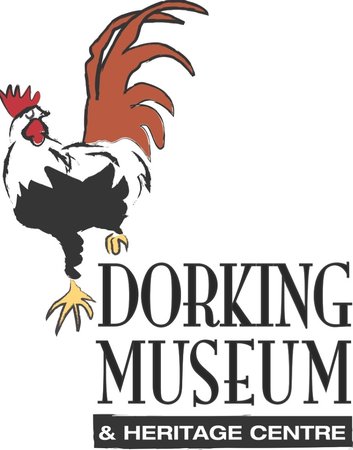People have lived in the Dorking area for thousands of years and, over time, they dropped things, including flint tools, coins and WW2 used bullets. Archaeology isn’t just about the prehistoric people or the Romans, but about more recent times too. Buttons, coins, old bottle tops and even toys lost by our great grandparents all have their stories to tell.
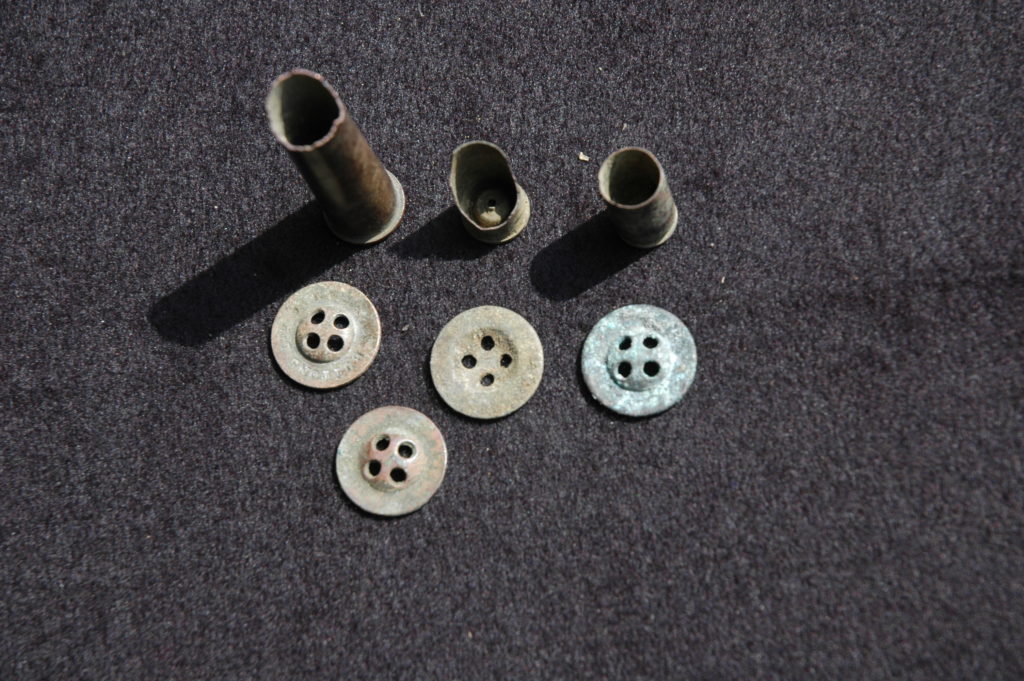
Objects made by humans are known as artefacts and can often be spotted where they sank into the ground. Some artefacts, such as old bottles and broken pottery were sometimes deliberately buried in the corners of gardens just to get rid of them. What was considered rubbish in days gone by can be today’s treasure to a time detective!
Some materials withstand the test of time better than others. Stone tools made by prehistoric people have survived for thousands of years. Old pottery will probably be broken, but sometimes it can be stuck back together.
Other materials are less durable. Wood rots, iron turns to rust and even today’s plastic will eventually disintegrate. Artefacts made of perishable materials such as wood or leather only survive for hundreds of years under certain rare conditions.
The early hunter-gatherer people who inhabited our area would have kept very few artefacts because they had to carry them around wherever they went. Times changed when we became settlers, living in the same place. Today, we own lots of things because we don’t have to carry them around. However, we are often surprised at the size of the removal truck needed when we decide to move home! Over the course of our own 21st century lives we will probably own millions of artefacts.
What will future archaeologists make of our lives through the artefacts we left behind?
Being a time detective helps us to find out what artefacts can tell us about life used to be like and how times have changed.
Where to look for artefacts
When you go out walking, keep your eyes to the ground because you can sometimes spot artefacts simply lying on the surface of fields where they have unearthed by ploughs. Flint tools and even Roman coins have been found in the Dorking area by keen-eyed observers.
Another place to be a time detective is in a garden or an allotment.
Archaeology in a garden
The gardens of older houses have often been left, largely, undisturbed just below the surface – until someone decides to create a flower bed or vegetable patch. New houses with gardens have usually been landscaped with a fresh layer of topsoil, then sown with lawns on top. However, you never know what lies slightly deeper down. Allotments have usually been dug over, but that doesn’t mean the gardener planting his runner beans noticed the bits of pottery or prehistoric flints he unwittingly unearthed! Maybe he just tossed them aside onto a debris heap.
You can often find artefacts by simply digging a hole (when you are planting a shrub, for instance) or when you turn over the soil when weeding with a spade or a trowel. Old clay tobacco pipes, ointment bottles, pottery, metal toys and even World War Two cartridges are regular finds.
It’s time to get digging.
Before you do, make sure you have permission from the landowner.
If you spot something unusual, take a photo before you dig it out and make a note of exactly where you found it. Some artefacts are quite fragile, so dig the soil away around them, rather than pull them straight out.
IMPORTANT SAFETY TIPS: Always wear gloves (such as gardening gloves) because some objects (e.g. broken bottles) are sharp. Corroded batteries can be poisonous. Always wash your hands afterwards.
What to do with your finds
Lay out your artefacts in a finds tray with any notes you have made.
Pottery, shells and stones can be gently cleaned using a toothbrush and water, but artefacts made from wood, metal or leather should not be washed.
How to identify finds:
There are several ways to approach this. You can search for clues on the internet or by visiting or mailing Dorking Museum. Museum volunteers are always eager to help.
Flints
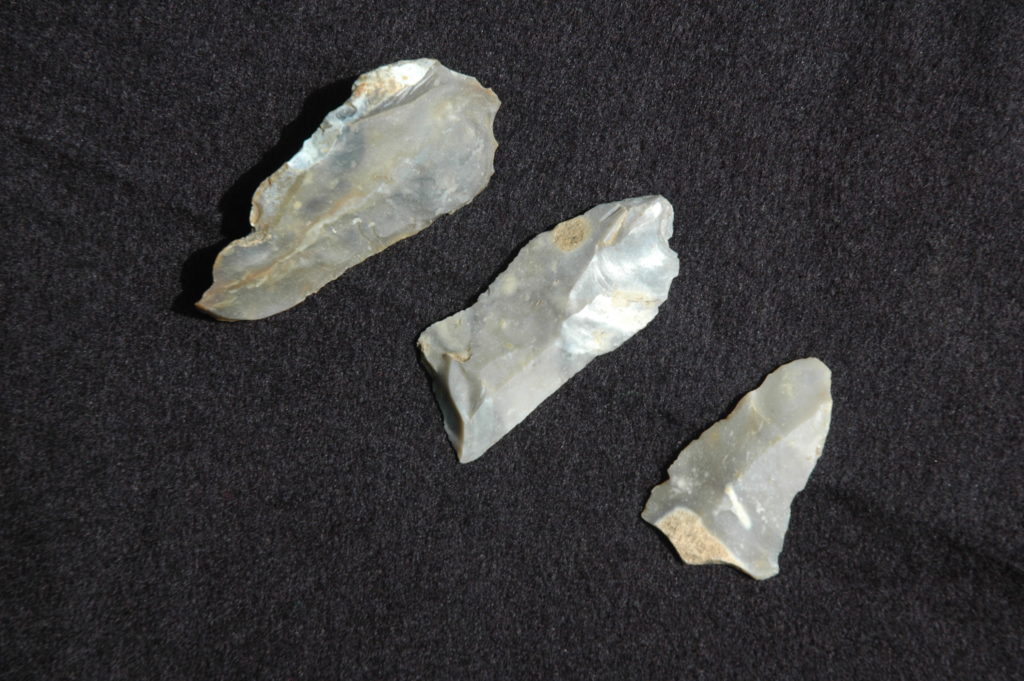
For suspected prehistoric flint tools, see the Surrey Archaeology factsheet.
Pottery
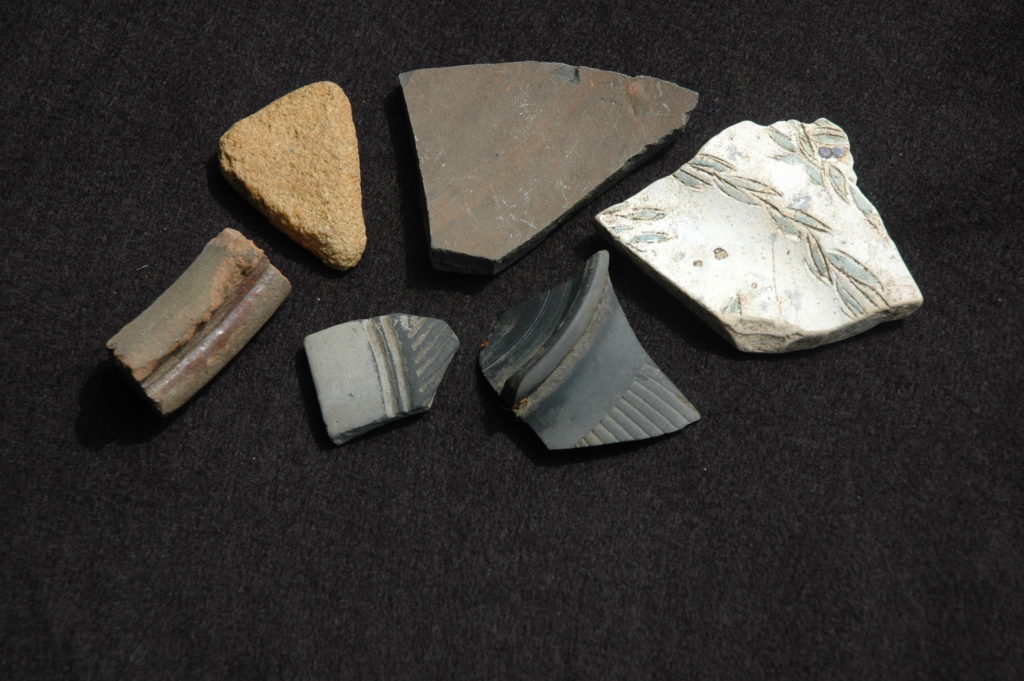
For pottery through the ages, click here
Natural or manmade?
These curious sandstone balls found in Museum volunteer Robin Cooper’s garden had everyone puzzled. They are the same size as the marble included in the picture below. When we cracked them open, they revealed a red core inside. Bullets from early musket guns could be discounted because they were moulded from metal. Could they be from a string of beads or an ornamental urn? Or could they be fossils or minerals?
We asked geologist, Prof. Ed Jarzembowski, if he thought these objects were manmade or natural.
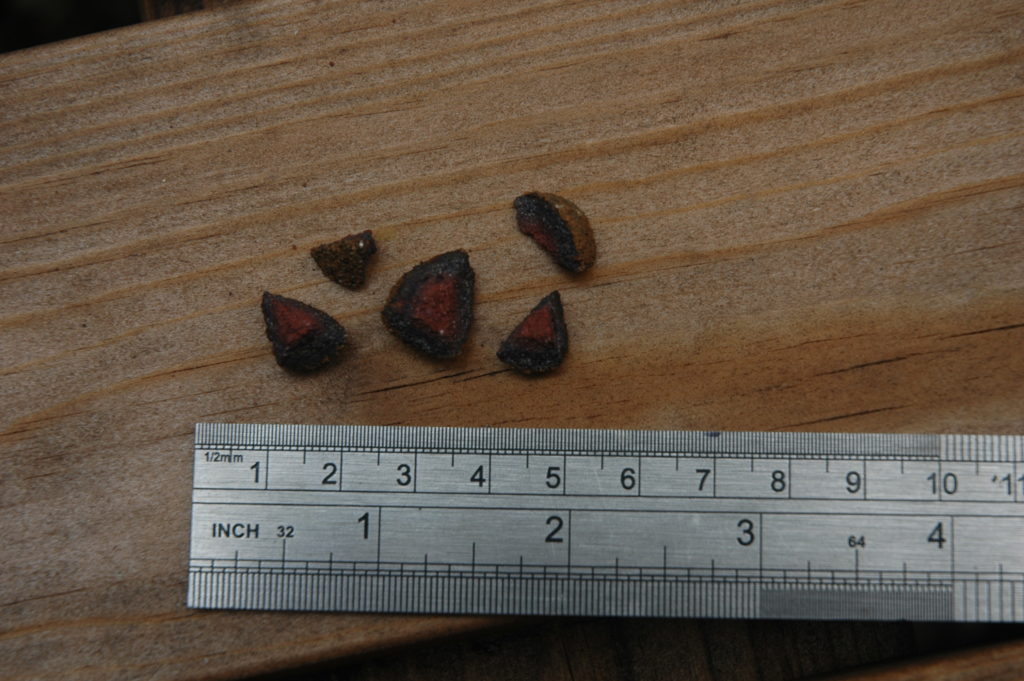
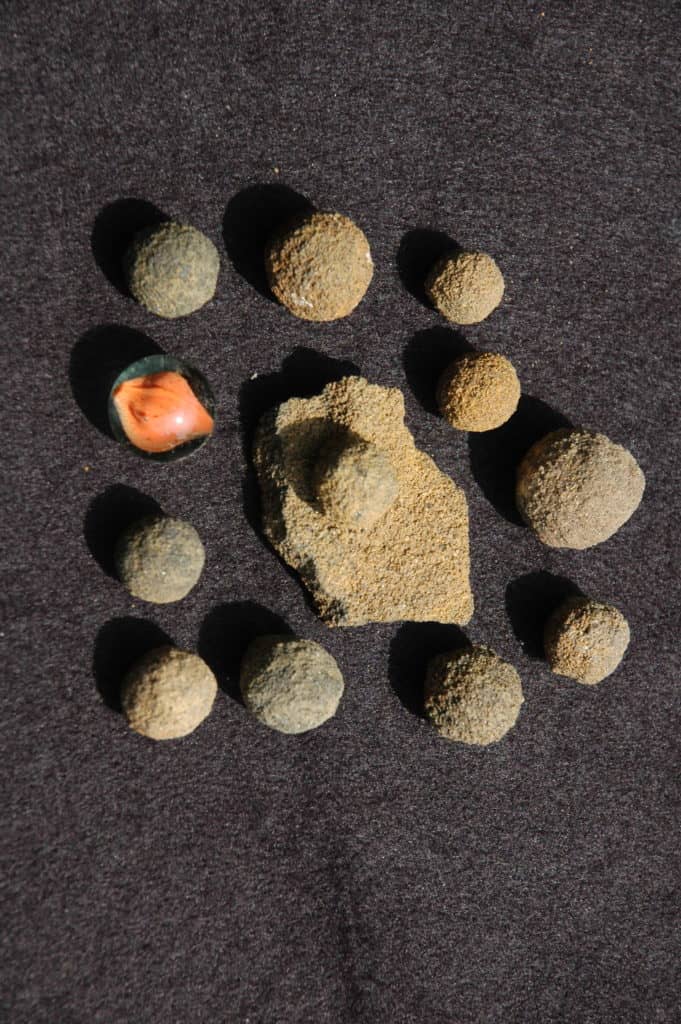
He said had seen them before in the cliffs in Kent, though they are quite rare. They are formed naturally by the processes of geology, because our local sand contains iron and the iron had migrated outwards over unimaginable time from a tiny speck to form a hard concretion (ball). The softer sandstone around them had eroded away, leaving just the hard parts. They are millions, not thousands of years old. Mystery solved.
Ed went on to say: ‘We have to remember that there is a whole world beneath our feet and archaeology is just the top layer!’
What to do with your finds
Why not start your own museum by putting your finds on display with their labels. Be sure to send a photo of your finds with a brief description to Dorking Museum, because it helps the museum build up a better picture of Dorking’s past.
More activities
You can find more time detective activities to do at home on Surrey County Council website, which includes a range of downloadable games, puzzles and factsheets.
Activities include digging your own test pit (the way the professionals work) and how create your own archaeology museum.
Dorking Museum is not responsible for the content of external websites.
You can also find more at:
Dorking Museum is not responsible for the content of external websites.
